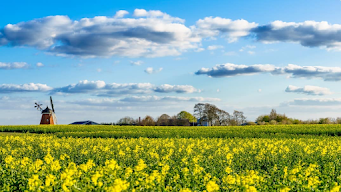Learn the Basics of the Genre with Ram V Chary
 |
Image source:
shawacademy.com |
Veteran photographer Ram V Chary says that every person learning photography most likely appreciates their environment. He says that nature never runs out of spectacular things for people to take photos of.
On that note, Ram V Chary discusses the basics of landscape photography, especially for those just getting started.
The first point he would want to touch on is the so-called exposure triangle. This may be a bit technical for beginners, but better to know it as well.
The exposure triangle represents the essential triumvirate of ISO, aperture, and shutter speed. By order of rank, first is ISO, which determines the brightness of a photo, depending on its sensitivity to light. The second is aperture, which is the size of the hole or the lens opening, allowing light to come in. The third is shutter speed, the duration a lens remains open, allowing light to pass through.
Next, Ram V Chary mentions composition, specifically, the rule of thirds. Beginners could learn much from the rule of thirds to balance a picture properly.
Basically, the rule of thirds is three horizontal lines and three vertical lines crossing each other, theoretically, inside the frame. The points where the horizontal and vertical lines meet are where the points of interest should be located. So, it's recommended to adjust and place the interesting part of a subject along with those points, explains Ram V Chary.
Lastly, there are the camera settings.
It is always encouraged to rely on creativity, especially when a photographer learns to manipulate settings. Two fundamentals come to mind: aperture and shutter speed.
For most experts, an aperture of f/71 and f/13 are best for landscape photography. It might only work, however, on front-to-back sharpness. Meanwhile, quick or slow shutter speeds create a freezing or blurry effect. Photographers should know how to experiment with different shutter speeds and aperture. This way, you will develop your skills and express yourself freely, especially when you like how it impacts your images, Ram V Chary adds.
The exposure triangle represents the essential triumvirate of ISO, aperture, and shutter speed. By order of rank, first is ISO, which determines the brightness of a photo, depending on its sensitivity to light. The second is aperture, which is the size of the hole or the lens opening, allowing light to come in. The third is shutter speed, the duration a lens remains open, allowing light to pass through.
Next, Ram V Chary mentions composition, specifically, the rule of thirds. Beginners could learn much from the rule of thirds to balance a picture properly.
 |
Image source:
learnprophotography.com |
Basically, the rule of thirds is three horizontal lines and three vertical lines crossing each other, theoretically, inside the frame. The points where the horizontal and vertical lines meet are where the points of interest should be located. So, it's recommended to adjust and place the interesting part of a subject along with those points, explains Ram V Chary.
Lastly, there are the camera settings.
It is always encouraged to rely on creativity, especially when a photographer learns to manipulate settings. Two fundamentals come to mind: aperture and shutter speed.
For most experts, an aperture of f/71 and f/13 are best for landscape photography. It might only work, however, on front-to-back sharpness. Meanwhile, quick or slow shutter speeds create a freezing or blurry effect. Photographers should know how to experiment with different shutter speeds and aperture. This way, you will develop your skills and express yourself freely, especially when you like how it impacts your images, Ram V Chary adds.
No comments:
Post a Comment